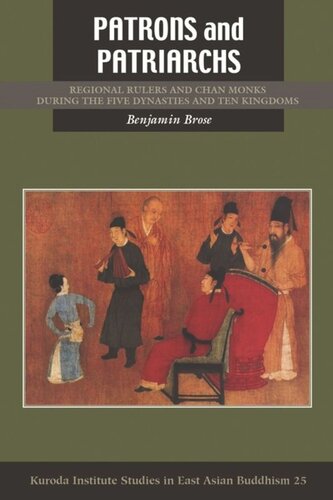

Most ebook files are in PDF format, so you can easily read them using various software such as Foxit Reader or directly on the Google Chrome browser.
Some ebook files are released by publishers in other formats such as .awz, .mobi, .epub, .fb2, etc. You may need to install specific software to read these formats on mobile/PC, such as Calibre.
Please read the tutorial at this link: https://ebookbell.com/faq
We offer FREE conversion to the popular formats you request; however, this may take some time. Therefore, right after payment, please email us, and we will try to provide the service as quickly as possible.
For some exceptional file formats or broken links (if any), please refrain from opening any disputes. Instead, email us first, and we will try to assist within a maximum of 6 hours.
EbookBell Team

4.0
46 reviewsPatrons and Patriarchs breaks new ground in the study of clergy-court relations during the tumultuous period that spanned the collapse of the Tang dynasty (618–907) and the consolidation of the Northern Song (960–1127). This era, known as the Five Dynasties and Ten Kingdoms, has typically been characterized as a time of debilitating violence and instability, but it also brought increased economic prosperity, regional development, and political autonomy to southern territories.
The book describes how the formation of new states in southeastern China elevated local Buddhist traditions and moved Chan (Zen) monks from the margins to the center of Chinese society. Drawing on biographies, inscriptions, private histories, and government records, it argues that the shift in imperial patronage from a diverse array of Buddhist clerics to members of specific Chan lineages was driven by political, social, and geographical reorientations set in motion by the collapse of the Tang dynasty and the consolidation of regional powers during the Five Dynasties and Ten Kingdoms. As monastic communities representing diverse arrays of thought, practice, and pedagogy allied with rival political factions, the outcome of power struggles determined which clerical networks assumed positions of power and which doctrines were enshrined as orthodoxy. Rather than view the ascent of Chan monks and their traditions as instances of intellectual hegemony, this book focuses on the larger sociopolitical processes that lifted members of Chan lineages onto the imperial stage. Against the historical backdrop of the tenth century, Patrons and Patriarchs explores the nature and function of Chan lineage systems, the relationships between monastic and lay families, and the place of patronage in establishing identity and authority in monastic movements.